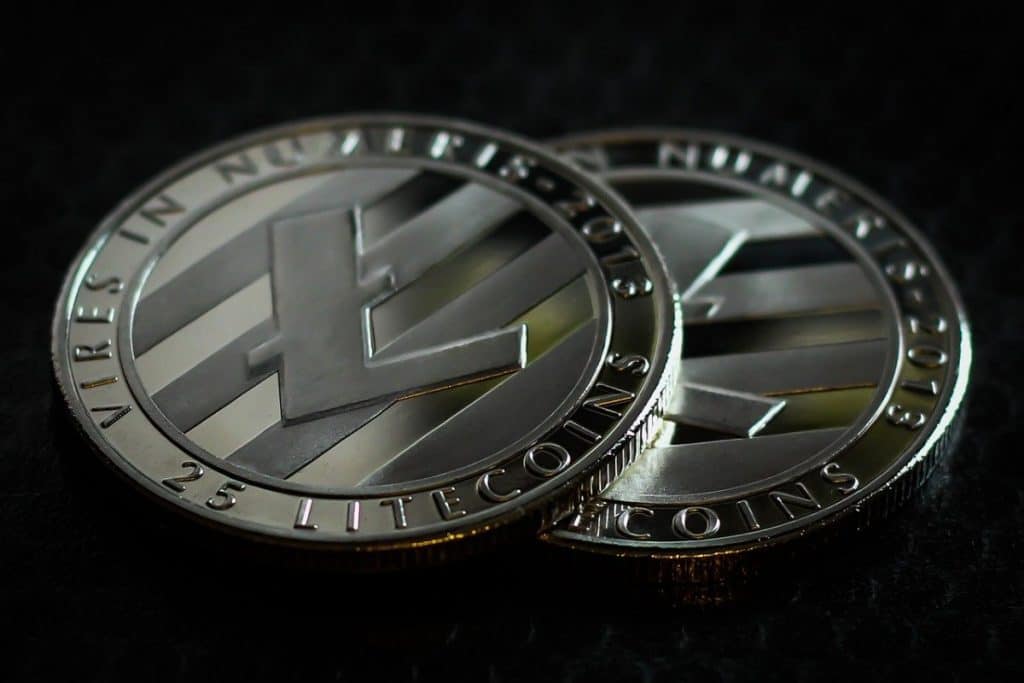With the prominent rise of the digital age, users are looking for ways to safely store and access their data. Over the years, forms of accessible data storage have evolved from floppy disks and CDs to flash or USB drives and online Cloud platforms, granting users access to their data from multiple devices.
However, when it comes to monetary data such as cryptocurrency, users are interested in more secure ways of storing and accessing their funds. How can cryptocurrency be stored on a flash drive?
There are multiples ways of storing cryptocurrency, but the most secure way is through cold storage. A flash drive is a secure cold storage device that allows you to access your data without the internet. Once you have a flash drive, preferably with encrypted storage, the next few steps will involve creating a secure place for the funds.
While it is not required to use a flash drive with permanent encrypted storage, it is recommended as an additional measure of security. Having encrypted storage ensures that any data information will be protected from decrypting from unauthorized users and hackers.
What is Cryptocurrency?
The wonderful world of digital expertise has gifted our dated appliances with voice technology, our phones with the ability to depict our personas electronically, and of course, turned our Benjamins into digital currency! This form of currency is fully accessible online for exchanging and purchasing.
Cryptocurrency is a form of monetary value or payment that is only digitally accessible and can be used online for purchases. It differs from real currency in that its use is not governed by a sole authorized controller or financial institution or bank.
Source: Ameer Rosic of Blockgeeks
What makes cryptocurrency so unique is that unlike traditional currency, it has no central authorizer overseeing its distribution and ownership. Many different companies have their own form of cryptocurrency available for trade and purchasing of goods provided by the company itself. High security is another reason for its popularity.
Types of Cryptocurrency
Rather than being managed and controlled by a central bank or authorizer like traditional or physical currency, cryptocurrency is issued by companies that have their own specific currency. Companies first issue their cryptocurrency in the form of tokens or coins which are then used to make purchases.
Real currency must be first used to exchange for the cryptocurrency. There are over 2,000 types of cryptocurrencies that are traded and exchanged on a daily basis. Over the years the value of certain cryptocurrencies has risen and declined to market fluctuation.
Bitcoin, Ethereum, and Litecoin are some of the more widely-used cryptocurrencies available to the public. They are also currently the highest in rank as far as their value goes.

Bitcoin
Bitcoin (BTC) is one of the most well-known cryptocurrencies and quickly rose to popularity after its initial release in January of 2009. Bitcoin can be purchased with U.S. currency and exchanged or traded using its unique Bitcoin peer-to-peer transaction network.
This payment network allows Bitcoin owners to transfer and receive cryptocurrency or bitcoins, using digital signatures to gain access to the wallet software in which the funds are stored. Each transaction is recorded through a blockchain or public database and is available to all viewers.

Ethereum Ether (ETH)
Ethereum is a public open-source platform or blockchain that provides users its native cryptocurrency, Ether. It is a fairly newer platform for cryptocurrency, with its initial release in July of 2015.
This platform is different from other cryptocurrency providers in that its blockchain is programmable by developers. Developers have the ability to develop apps using Ethereum that include games, cryptocurrency wallets, and other financial applications in which users can manage, trade, and invest their funds.

Litecoin
Much like bitcoin, litecoin also offers its users access to peer-to-peer transaction networks. In fact, its initial release in October of 2011 proved it to be closely modeled after bitcoin.
How To Purchase Crypto
Cryptocurrency can be purchased from any company that provides its own cryptocurrency for purchase and/or exchange. Most cryptocurrencies can be purchased with U.S. dollars, bitcoins, or other forms of cryptocurrency. They are available for purchase online through the specific company website.
In order to buy cryptocurrency, you must first set up a digital wallet either through an online service or a system platform available offline usually referred to as a cold storage wallet. Tails is a system platform that allows cryptocurrency users access to their data with or without the use of the Internet.
According to its website, “Tails is a live system that aims to preserve your privacy and anonymity. It helps you to use the Internet anonymously and circumvent censorship almost anywhere you go and on any computer but leaving no trace unless you ask it to explicitly.”
Source: Tails “About”
Electrum is a wallet platform specifically for Bitcoin users that provides cold storage options for securely soring assets. Cryptocurrencies can also be purchased through trades using online brokers such as Coinbase and Robinhood, offered to users in select U.S. states.
The Cryptocurrency Forums is an Amazon Associate. As an associate, we earn from qualifying purchases. We are also an affiliate of Trezor, Ledger, Coinbase, NordVPN, Ezoic, and WPX. Use of affiliate links does not add any cost to the buyer.
Securing Cryptocurrency on a Flash Drive
Cold storage methods such as Electrum and flash drives are the most secure methods of storing cryptocurrencies for several reasons:
- They can be used to make transactions offline.
- Their secured storage offline makes it harder for hackers and viruses to gain access to any of your assets and information.
- Flash drives, in particular, require storage on the portable device that can be kept separate from the public networks used to access cryptocurrencies.
- They can be encrypted with a seed phrase to access or recover any cryptocurrency, should it become lost or stolen. (Note: The seed phrase consisting of multiple words, is what actually contains your currency, so it’s important to make it something unique and easily remembered by you only!)
- Flash drives are more affordable options for making your cryptocurrency portable and safe from unauthorized persons.
While USB flash drives with average quality and storage options are mostly available for an affordable price, there are more expensive similar devices that provide security for your cryptocurrency. These devices are usually referred to as hardware wallets and can, depending on the make and model, average in price from around $55 to upwards of $500. But after reading the following steps and watching the vidoe, you might decide, like me, that a Ledger Nano S or a Trezor One are worth their price in convenience.
Trezor offers cryptocurrency hardware wallet devices built with strict security measures such as required passwords and two-factor authentication to gain access. Trezor devices can be used to store numerous cryptocurrencies besides Bitcoin and are available for purchase from any technology retailer.
Ledger is another manufacturer of hardware wallet devices used for storing cryptocurrencies. They are on the lower, more affordable end of the spectrum for frugal cryptocurrency users.
Storing Bitcoin Through a USB Flash Drive
Regardless of the type of cryptocurrency, all can be stored securely on a flash drive or hardware wallet device. Because Bitcoin, in particular, offers its very own hardware wallet specifically for its cryptocurrency, we’ll focus on the how-tos of safely storing it.
The most popular Bitcoin hardware wallet is Electrum and was specifically created for the storage of bitcoin assets. The program’s website advises users to refrain from downloading its software from untrusted sources and recommends only downloading it from its trusted Electrum website.
Here is the step-by-step guide to storing Bitcoin on an offline flash drive through Electrum:
- Disconnect the computer or similar device you are using from the Internet by unplugging it or manually turning it off
- Download Electrum from the program’s website. Information about version history and different procedures for specific users i.e. Windows, macOS, can be found here.
- Connect the intended USB flash drive to the computer in use. It is recommended to use a clean flash drive free of any prior data and whose use is strictly for the purpose of storing cryptocurrencies.
- Once the flash drive is connected to your device, download the Electrum program onto it and save it.
- After the Electrum is saved onto the flash drive, eject it and restart your device.
- Once your cold storage wallet is set up, you are free to make a secure Bitcoin transaction free from the Internet.
After Electrum has been downloaded onto your device, make sure you maintain its disconnect from the Internet before making any type of Bitcoin transaction. The transaction can be generated from the encrypted seed phrase or key file on your connected flash drive.
Once the transaction has successfully gone through, disconnect the USB flash drive and reconnect to the Internet. Access to the Internet is necessary to send Bitcoin transactions through however, it is not necessary for storing bitcoins or any other form of cryptocurrency.
The Role of Cryptocurrency in Modern Society
Like all new inventions of society, digital or not, each come with their ups and downs. Bitcoin and other like cryptocurrencies hold potential importance in the future of currency. One reason being that it can be transferred between parties privately, giving users full authorization over all cryptocurrencies.
“‘In the next few years, we are going to see national governments take large steps towards instituting a cashless society where people transact using centralized digital currencies. Simultaneously, the decentralized cryptocurrencies – that some even view as harder money – will see increased use from all sectors.’”
Source: Quoted by Caleb Chen of London Trust Media on Blockgeeks
Because of its cashless aspect, cryptocurrency can diminish the hassle of users not having sole ownership over their monetary assets and put users at ease should the economic market crash and any currency managed by major financial institutions are completely lost.
The Pros and Cons of Cryptocurrency
The positive aspect of cryptocurrency is that it can be managed, purchased, and exchanged privately through an online server and is free from authorized control.
Some pros of cryptocurrency:
- No authorized controller—The freeing aspect of using cryptocurrency is that you don’t have to have permission to use it. It is globally available to the public and free from transaction fees that traditional financial institutions would charge.
- It’s secure—Because private keys and encryption storages are available for a user per user discretion, cryptocurrency funds are highly secured. There are multiple steps of security that users must go through in order to access their funds and these steps are required each time of access.
- Anonymity—Cryptocurrency users are not required to go by legal names or identities in order to perform transactions. Users go by specified cryptocurrency addresses to which and from they make transactions. Anonymity also ensures that users are protected from identity theft.
- 24/7 accessibility—Unlike the business schedule that traditional financial institutions adhere to, the world of cryptocurrency allows for 24/7 accessibility to funds and transactions. There is no time frame to wait by in order to complete a transaction, the process is instant.
- Transaction transparency—All transaction data is available to all cryptocurrency users on a public database known as a blockchain. For many users, having transaction transparency allows for a more trustworthy currency system.
Some cons of cryptocurrency:
- Anonymity—While anonymity is pro, it many ways it can also be considered a con. Because users are able to remain completely anonymous, it is harder to track down funds and transactions should they be stolen or interrupted by a hacker posing as a sincere user. This aspect makes it easier for criminals using anonymity as an opportunity to take their shot without any repercussions.
- No back-up plan—Completed transactions are unfortunately irreversible and that means that once they have gone through, there is no getting your funds back. Although certain cryptocurrency platforms provide security from unauthorized access, they do not protect against funds sent by accident or on purpose.
- Market ups and downs—Much like the stock market, cryptocurrency is also affected by the fluctuation of the economy. Given their high value compared to that of a U.S. dollar, many people view cryptocurrency as a valuable investment. The downside of any investment it that the exact return in value can be more or less than what it was initially depending on the economic climate.
- Its purpose—Because it is fairly new as a form of currency, many people find its purpose of use and existence hard to understand. The concept of cryptocurrency is hard to grasp for the less informed percentage of the population as a result, a lot of people are skeptical in adding it to their list of currencies.
When in Doubt, Use a Flash Drive
Whether you prefer to store your cryptocurrency funds on an online web wallet or through a cold storage method such as a flash drive, it is strictly up to you and your preferred amount of security.
However, storing your cryptocurrencies on a flash is the most recommended and secured way of keeping it safe from hackers and data breaches.
Flash drives should be used with private keys for extra security. If you come across a flash drive being offered with a private key DO NOT purchase it. Private keys should not be shared with anyone other than yourself.
Beware that online web and hot wallets tend to store the private keys of their users on-hand, as it’s important to weigh the risk that your information can be potentially lost or hacked by a public user.
Notable Risks With Using a Flash Drive
Although flash drives guarantee the safest method of storing cryptocurrency, they too come with significant risks. One particular risk is the fact that they are portable devices open to being lost, stolen, or even worse, damaged beyond repair. That is why the importance of securing them in a safe place is highly stressed.
Additional measures for securing the flash drive containing cryptocurrency can include:
- Safely locking the USB flash drive in a fire and pullet proof safe and storing an original and extra key in a place that you will remember.
- Copying the information onto an extra USB flash drive in case one is lost or damaged.
- Using a USB flash drive with encrypted storage so that in the case of it being stolen, the data is safe from being accessed.
If you worry that you may easily lose track of your flash drive, try looking into purchasing a hardware wallet. Hardware wallets are similar to USB flash drive devices with encrypted storage. They are a bit more secure than regular flash drives because they are manufactured strictly for the use of storing cryptocurrency data.

